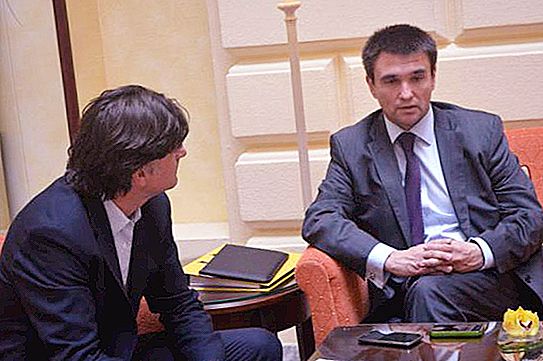Perhaps every fan of the work of the great composer should visit the Rimsky-Korsakov Museum. Alas, not all residents of St. Petersburg, where it is located, are aware of the existence of such a place. We will try to talk about this - briefly, but at the same time capacious.
Where is?
To begin with, it is located in the cultural capital of Russia - St. Petersburg at Zagorodny Prospekt, 28.
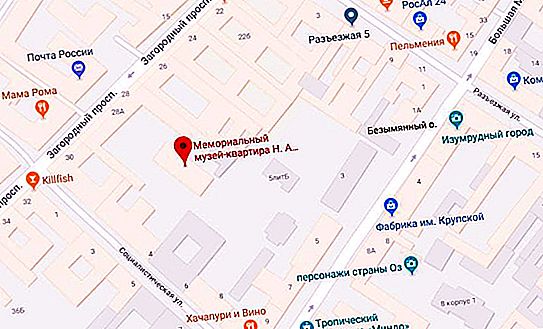
You can get here by metro, leaving at the stations "Zvenigorodskaya", "Dostoevskaya" and "Vladimirskaya". You can also use land transport - there are five tram routes. To do this, just exit at the “Five Corners” stop, where the trams of routes 3, 8 and 15 go.
The area is generally rich in various attractions. So, here is located not only the Rimsky-Korsakov house-museum, but also many interesting, unusual monuments. For example, a monument to the Chimney Sweep, Herald, Dog Gavryusha. The Monument of Three Angels is also located here, and young tourists will surely enjoy a magnificent set of figures depicting the main characters of the works of Frank Baum from the country of Oz. Here they will see the Lumberjack, Scarecrow and many others.

By the way, if you live not in St. Petersburg, but in the Pskov region, then you can always visit the magnificent Rimsky-Korsakov museum-estate. Alas, it cannot boast of reliability of the situation - during the Great Patriotic War, the houses were completely destroyed by the invaders, but subsequently carefully restored to the surviving foundations.
History
The Rimsky-Korsakov Museum was opened in 1971. The place was not chosen by chance at all - the composer himself lived here from 1893 to 1908.
The building belonged to the wife of General V.N. Lavrov, and it was here that Nikolay Andreevich moved with his family in 1893, occupying apartment number 39, located on the third floor. Here he worked productively, creating the lion's share of his immortal works. Yes, of the fifteen operas that brought him fame, 11 he wrote here. These include the “Night before Christmas”, “Sadko”, “Kashchei the Immortal”, “The Tale of Tsar Saltan”, “Mozart and Salieri”, “Servilia”, “The Tale of the Invisible City of Kitezh and the Maiden Fevronia”, as well as many others.
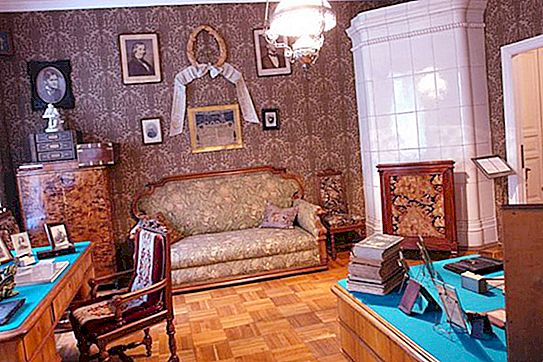
Alas, in 1908, the composer died, and his wife, unable to pay a significant rent, was forced to move to Andrei Nikolaevich, his son. After 10 years - in 1918 - the apartment was transferred to the ownership of the state housing stock and a communal apartment was built here. In 1971, all tenants received separate apartments, the communal apartment was resettled. Well, a few months later, in December of that year, the composer's descendants made a request to organize a Rimsky-Korsakov museum there, which was satisfied with the St. Petersburg Museum of Theater and Music.
The main expositions
The whole museum is divided into three parts: memorial, exposition and concert. Each of them is of considerable interest to fans of the composer's work. Visiting this place, many art lovers note that time seemed to stop here, the indescribable atmosphere that prevailed here when Nikolai Andreyevich himself lived in the apartment was preserved.
In total, more than 500 valuable exhibits are involved in the museum's exhibits.
Memorial Department
Perhaps, for people who want to plunge into the atmosphere of the late nineteenth century, this particular exhibition is of the greatest interest. This includes the dining room, living room, study, as well as the entrance hall.
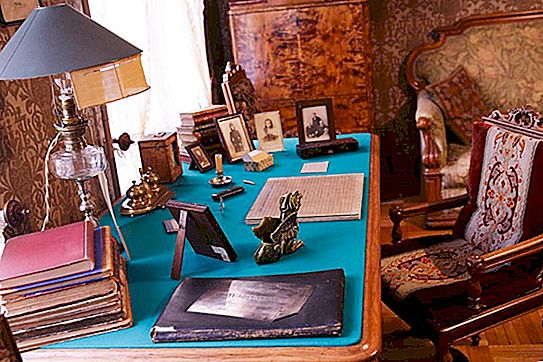
On the walls are photographs of people who were members of the Mighty Handful creative association. Under the glass of the windows, you can see the sketches of the opera Stenka Razin, which the composer, alas, did not have time to finish. Also here is the score of the opera Kashchei the Immortal, published by a German publishing house. There are a number of personal belongings of the composer. Having visited the office, on the desktop the museum guests will see the manuscript of the opera "The Golden Cockerel".
Well, the central exhibit of the living room is the piano, created by the masters of the company Jacob Becker. It was played not only by the main occupant of the apartment, but also by his guests: Alexander Glazunov, Sergey Rachmaninov, Igor Stravinsky, Alexander Skryabin and many others.
The dining room walls are decorated with portraits of the composer's ancestors - he came from an ancient noble family, originating in the late fourteenth century. On the dining table are laid out personalized cutlery. Also here you can see a silver bowl and salt shaker belonging to the composer's family.

The room was restored as accurately as possible. One of the composer's sons timely compiled an inventory of the family’s property and even a list of places where certain items were placed. Therefore, the Rimsky-Korsakov Memorial Museum can claim maximum historical accuracy.
Exposition department
The exposition hall will primarily appeal to people interested in the work of the composer. Still, Nikolai Andreevich was not only a composer, but also a writer, conductor, and also a music teacher at the St. Petersburg Conservatory!
Therefore, in this department you can see a lot of documents telling about his works. One of the most interesting sights is the composer's main tool - a pen with a gold pen. It was presented to the composer after the premiere of the opera May Night, which was first staged on May 9, 1880 at the Mariinsky Theater. Highly appreciating such a valuable gift, Rimsky-Korsakov wrote all subsequent works precisely with her help.
Concert hall
Well, just art lovers should definitely visit the concert exposition of the Rimsky-Korsakov museum-apartment.
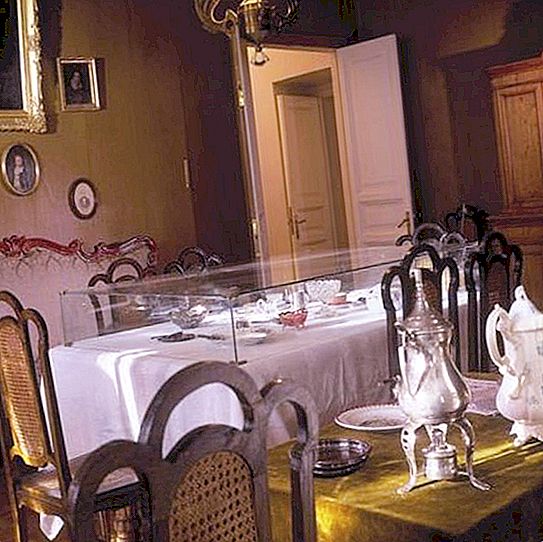
A real concert hall is designed here for up to fifty visitors. Visiting this place, tourists can hear the performances of St. Petersburg musicians and singers, soloists of opera houses and other artists.
Every year on March 18 - the composer's birthday - the influx of visitors is so great that the concert has to be transferred to the memorial parlor. And in 2012, a glorious tradition appeared to hold concerts of organ music, which remains to this day. True, music is performed on an electronic organ, but the impressions are still unforgettable.
Korsakov environments
The composer himself started the tradition of collecting artists in his house. It happened twice a month - on odd Wednesdays. Singers, artists, musicians and other prominent people of their time gathered here. Therefore, there is nothing strange in the fact that such meetings quickly received the nickname "Korsakov environments." Among the guests of honor were often Chaliapin, Repin, Serov, Zabela-Vrubel and many other friends of the composer.
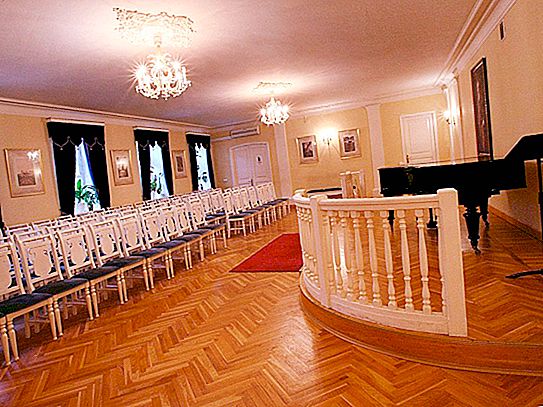
A glorious tradition continues to live in our days. Singers, composers and musicians come here on odd Wednesdays to demonstrate their skills. As well as art lovers who want to enjoy their work. So there is no doubt: when visiting the house-museum of N. A. Rimsky-Korsakov, each person will find something interesting for himself, something that will remain with him for life.
Time for visits and ticket price
The museum operates five days a week - from Wednesday to Sunday. Monday and Tuesday are weekends. In addition, the last Friday of the month is officially a sanitary day - the museum of N. A. Rimsky-Korsakov does not work.
On Wednesday, you can visit the cloister of culture from 13.00 to 21.00. On other working days, the schedule is slightly different - from 11.00 to 19.00. However, it should be borne in mind that the ticket office closes an hour earlier.
A regular ticket costs 125 rubles. Schoolchildren can visit the museum for 100 rubles. For pensioners and students, the cost of visiting will be 75 rubles.
Children under 7 years old are given free access, but if they are part of an organized group, they will also have to pay 75 rubles.
The cheapest visit is for representatives of privileged groups - 50 rubles.
However, there is an opportunity to save other categories of citizens. For example, people under the age of 18 can visit the museum for free every third Thursday of the month. Free admission is also provided to holders of the St. Petersburg and St. Petersburg Guest Card. Petersburg CityPass.
If you want to use the services of a guide, you will have to pay another 500 to 1000 rubles - for one group up to 20 people. Some visitors prefer to save by using the services of an audio guide - this will cost only 100 rubles.




